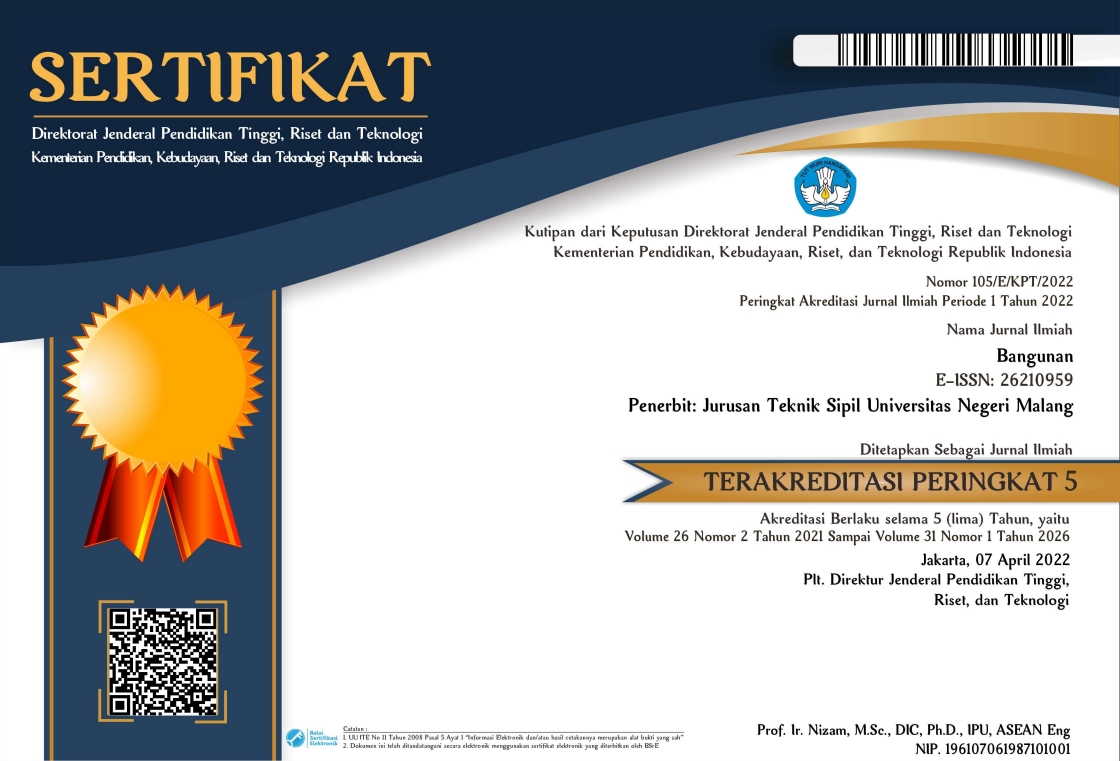RETRACTED: PERBANDINGAN MODEL UNSTEADY DAN STEADY FLOW ALIRAN BANJIR SUNGAI WAY LAALA SEBAGAI DASAR SOLUSI PENANGANAN PASCA BENCANA
Abstract
Kami, tim editorial Jurnal Bangunan, mengumumkan penarikan artikel berjudul "PERBANDINGAN MODEL UNSTEADY DAN STEADY FLOW ALIRAN BANJIR SUNGAI WAY LAALA SEBAGAI DASAR SOLUSI PENANGANAN PASCA BENCANA" yang diterbitkan pada Vol. 28, No. 1, 2023, berdasarkan permintaan penulis, Gilang Idfi. Penarikan ini dilakukan karena penulis menemukan kesalahan signifikan dalam pengumpulan data yang mempengaruhi keakuratan hasil penelitian. Demi menjaga integritas akademik dan kualitas penelitian, penulis memutuskan untuk menarik artikel ini, melakukan revisi yang diperlukan, dan mengajukan kembali artikel yang sudah diperbaiki. Kami mendukung keputusan ini dan berkomitmen untuk memberikan kesempatan kepada penulis untuk mengajukan kembali artikel mereka setelah perbaikan dilakukan.
Dokumen dan isinya di hapus dari Jurnal Bangunan dan menghapus semua referensi yang terkait dengan artikel ini.
Full Text:
PDFDOI: http://dx.doi.org/10.17977/um071v28i12023p%25p
Refbacks
- There are currently no refbacks.

This work is licensed under a Creative Commons Attribution-ShareAlike 4.0 International License.

This work is licensed under a Creative Commons Attribution-ShareAlike 4.0 International License.



